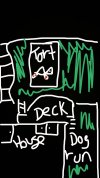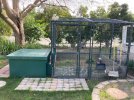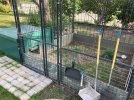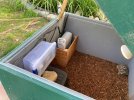rowanzdz
New Member
Hi, my name is Rowan and I have a 12 year old male red foot name Torti! He’s been with me since we were both little and we’ve grown up together! I’m currently in the Chicago burbs and I’m looking to build an outdoor enclosure in my parents back yard!
Usually Torti lives with me at college in a 6x2 galvanized steel tractor supply stock tank with a greenhouse cover over it. I know that it’s not enough space but it’s the best I can do during the winter for now. My dream is to move somewhere further south and have him live outside full time! I had some questions about building the enclosure and I was looking for some tips!
Usually Torti lives with me at college in a 6x2 galvanized steel tractor supply stock tank with a greenhouse cover over it. I know that it’s not enough space but it’s the best I can do during the winter for now. My dream is to move somewhere further south and have him live outside full time! I had some questions about building the enclosure and I was looking for some tips!
- Size: what is a good size enclosure for him? I know the larger the better but I wanted a range of what most people do
- Most of the lumber near me is pine which I know is unsafe for tortoises. What do you recommend?
- Predators: I have three large dobermans who love to jump. They have a dog run in the side yard that they access through the deck doors and stairs. I’ve attached a chart in the image below for reference (excuse my terrible drawing). The deck is gated and so is the dog run but one of my dogs has a high prey drive and always manages to escape. My family is often forgetful and just lets them out into the main portion of the backyard. In addition, sometimes the dogs manage to sneak out while we are carrying groceries and such. There are also raccoons, opossums, and coyotes in the area. I want to bring him in every night because I’m so afraid of what could happen. Should I have a mesh lid covering the enclosure or should I use a gate? And if I use a gate should it be electric?
- Flooding. My house is the oldest in the block and this the lowest so everyone’s rain water flows into our backyard. We have a drain and a tree to soak up the water but it still floods 1-2x a year.
- Humidity: Should I just wrap some greenhouse plastic over a portion on top of the enclosure? I don’t want to make it too hot for him because I know it’s going to be a really hot summer. I also have a big ceramic soaking dish for him. The water in the hose comes out incredibly cold though so I’m not sure if I should use it.
- Planting: What plants should I use to provide maximum coverage that can also survive the Chicago winter and are perennial? Where can I buy these plants to ensure that they are tortoise safe and have not been sprayed with any pesticides? Or is there a way for me to treat them so that they are safe? I was also going to seed it with some weed seeds (broadleafs, dandelions, etc).
- Hides: do I need a heated dog house style hide for him? I’ll probably take him back to college with me in September when it starts to get colder. I also saw another user made rock caves for their tortoises which look amazing and I was wondering if someone had directions to build them
- Anything else I’m missing or any other tips and resources to check out? I’ve read a lot of posts on here but still had more questions! Thank you for all your help! I just want what’s best for my little guy





